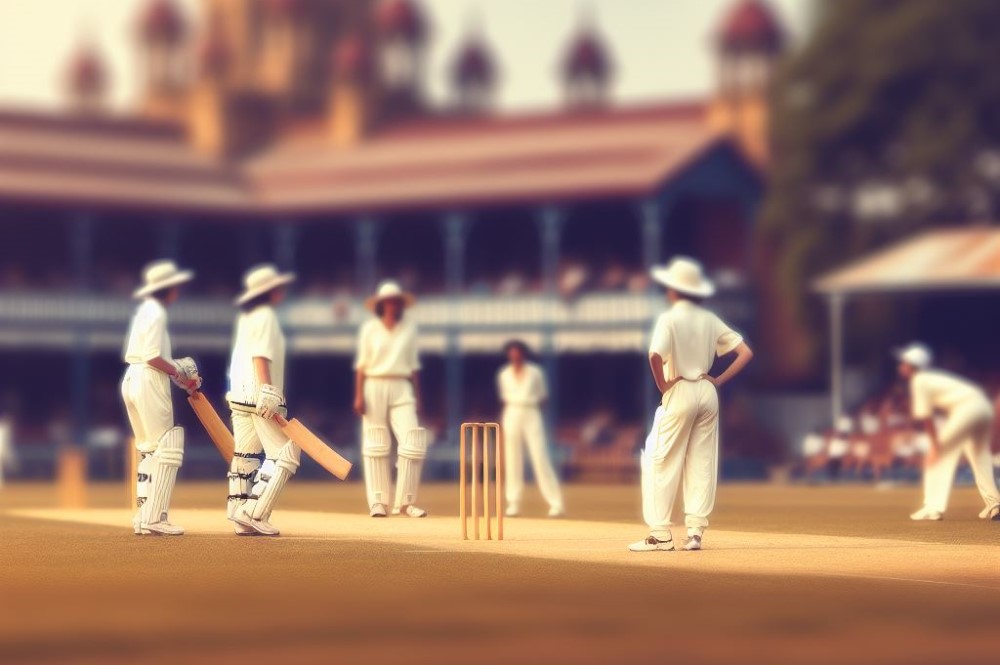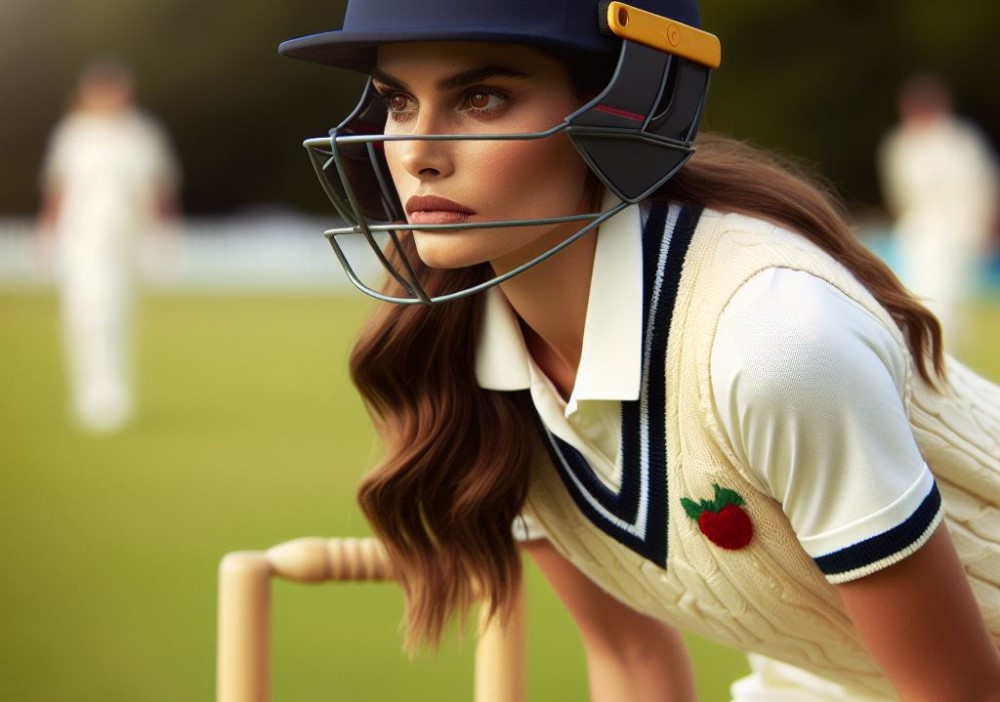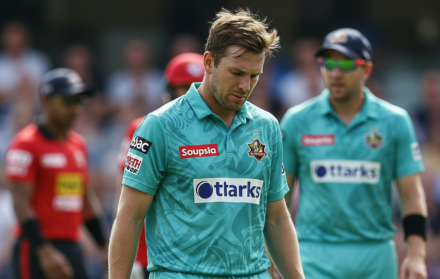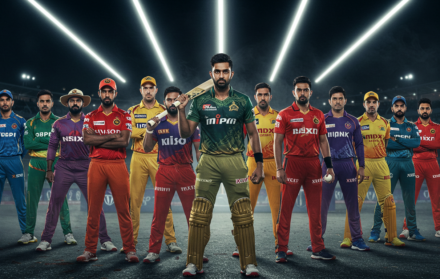
The History and Evolution of Womens Cricket
Embarking on a captivating journey through time, the history and evolution of womens cricket unfold as a narrative of empowerment, resilience, and a relentless pursuit of equality. This odyssey is more than a chronicle of matches and records; it’s a testament to the spirit of progress within the sporting realm.
At the heart of this transformative narrative lies the profound link between women’s cricket and gender equality. This symbiotic relationship has evolved over the years, challenging societal norms and championing inclusivity within the cricketing arena.
As we navigate this dynamic landscape, the influence of women’s cricket extends far beyond the boundaries of the field, becoming a powerful agent of change.
A significant chapter in this narrative involves the ongoing fight against sexism in women’s cricket. Despite the remarkable strides, challenges persist, and women within the sport continue to challenge stereotypes, fostering an environment of inclusivity and respect. The battles fought on the cricket pitch resonate beyond, contributing to broader conversations on gender equality.
Crucially, the journey delves into the discussions surrounding equal pay, shedding light on the nuanced aspects of this ongoing dialogue. Women in cricket are not only showcasing their athletic prowess but also actively participating in the discourse, advocating for equal recognition and compensation.
Exploring the annals of women’s cricket wouldn’t be complete without acknowledging the luminaries who have become trailblazers and inspirations for aspiring players. These prominent women cricketers have not only left an indelible mark on the sport but have also played pivotal roles in shaping its future.
The Origins of Women’s Cricket

The origins of women’s cricket can be traced back to the 18th century in England. Women used to play cricket matches recreationally in their local communities. It was not until the late 19th century that women’s cricket became organised.
The first recorded women’s cricket match took place in Surrey in 1745. These matches were social gatherings for the community. As the sport gained popularity, more organised matches and teams were formed. In 1887, the first women’s cricket club, the White Heather Club, was established in Yorkshire.
Women’s cricket faced challenges and prejudices, but in the early 20th century, it began to gain recognition and support. In 1934, the England Women’s Cricket Association was formed as the first official women’s cricket team.
Over the years, women’s cricket has grown in popularity. It is now played at national and international levels, with many countries having their own women’s cricket teams. The Women’s World Cup, first held in 1973, is an international tournament in which England emerged as the champions.
Early Development and Challenges
Women’s cricket has a long and influential history, which has been characterized by early development and challenges. At the beginning, women encountered difficulties in finding platforms to exhibit their talents and skills. Individuals and teams cleared the path for the growth of the sport.
One major challenge in the early days of women’s cricket was the limited opportunities for participation. Another challenge was the lack of recognition and support from cricketing organizations. Financial constraints and societal attitudes acted as barriers.
Nevertheless, women’s cricket has made significant progress in terms of early development and overcoming challenges. Determined players, support from cricketing institutions, and the increasing popularity of the sport have all contributed to its development.
The First International Matches

The First International Matches in women’s cricket were a significant milestone in the sport’s history. Here are key facts about the early international matches:
1. The first recorded international women’s cricket match took place in 1934 between England and Australia at the Brisbane Exhibition Ground.
2. The match had two innings per side, with Australia winning by 45 runs. They scored 221 runs in their first innings, while England managed 176 runs.
3. Following the success of the inaugural match, the first Ashes series in women’s cricket was held in 1934-35. It consisted of three Test matches.
4. Australia won two out of the three Test matches in the first women’s Ashes series, generating significant interest in women’s cricket.
5. In 1958, England women’s cricket team went on their first overseas tour to Australia. The tour included five Test matches, with England winning the series 1-0.
These early international matches played a pivotal role in fostering international competition and promoting the growth of women’s cricket. They set the stage for future developments and allowed more countries to engage in international cricket matches.
Growth and Recognition of Women’s Cricket
The growth and recognition of women’s cricket has been remarkable in recent years. The popularity and participation in women’s cricket have witnessed an increase, with more countries now having established women’s cricket teams. This growth can be attributed to several factors.
Increased media coverage has played a crucial role in promoting women’s cricket. Broadcasting rights and live streaming of women’s matches have allowed a wider audience to engage with the sport. This has not only increased its visibility but also inspired young girls to take up cricket.
There has been significant investment in women’s cricket by various cricket boards and sponsors. This has led to improved infrastructure, training facilities, and coaching programs for women cricketers.
Increased funding has also enabled women’s cricket teams to participate in international tournaments, gaining exposure and recognition on the global stage.
Advocacy and campaigns promoting gender equality in sports have further contributed to the growth and recognition of women’s cricket. These efforts have highlighted the talent and skill of women cricketers, challenging societal norms and stereotypes.
The International Cricket Council (ICC) has also taken steps to promote women’s cricket. The ICC organizes major tournaments like the Women’s World Cup, which provides a platform for women cricketers to showcase their abilities and compete at the highest level.
Fact: The total number of girls participating in cricket globally has increased by 84% in the last decade, indicating the significant growth and recognition of women’s cricket.
Evolution of the Women’s Cricket Format

Women’s cricket has experienced a remarkable evolution in the format over the years, aiming to enhance the game and create more avenues for women to showcase their skills. The main aspects of the development of women’s cricket include the following:
1. Professionalism: The introduction of professionalism has been a significant milestone in women’s cricket. It has allowed players to solely focus on the sport, resulting in heightened competitiveness and elevated skill levels.
2. Limited Overs Cricket: Initially, women’s cricket followed the Test match format of men. Due to time constraints and the desire for increased viewership, limited overs cricket gained popularity. Matches were shortened to 50 overs per side, providing more excitement and faster-paced games.
3. Introduction of T20 Cricket: The most substantial evolution occurred with the introduction of Twenty20 (T20) cricket. T20 matches are shorter, with each team playing only 20 overs. This format has garnered immense popularity due to its high-speed nature and ability to attract a broader audience.
4. Global Tournaments: The evolution of women’s cricket has also led to the establishment of global tournaments like the Women’s Cricket World Cup and the Women’s T20 World Cup. These tournaments serve as platforms for players from various nations to exhibit their talent and compete at the international level.
5. Increased Coverage and Support: The growth of women’s cricket has been accompanied by amplified media coverage and support from cricket boards and sponsors. This not only enhances the visibility of the sport but also provides better financial backing and resources for players.
To further propel the development of women’s cricket, it is crucial to continue investing in infrastructure, promoting grassroots development, and ensuring equal opportunities for women. These steps will secure a brighter future for women’s cricket and pave the way for more exhilarating and competitive matches.
Major Tournaments and Achievements
The Women’s World Cup: One of the major tournaments in women’s cricket is the Women’s World Cup. It is held every four years and features teams from around the world competing for the prestigious title. Australia emerged as the champions in the most recent Women’s World Cup in 2020.
The T20 World Cup: Another significant tournament in women’s cricket is the T20 World Cup. This tournament focuses on the shortest format of the game, providing fast-paced and exciting matches. Australia once again claimed the victory in the most recent T20 World Cup in 2020.
The Ashes: The Ashes is a test series played between Australia and England, and it holds great importance in both men’s and women’s cricket. Women’s Ashes was introduced in 1998, and it consists of a mix of one-day and test matches. The team that performs better across multiple formats wins The Ashes.
Commonwealth Games: Women’s cricket is also featured in the Commonwealth Games, a multi-sport event held every four years. It provides an opportunity for players from different countries to showcase their skills and compete for gold, silver, and bronze medals.
These major tournaments have played a crucial role in the development and recognition of women’s cricket globally. They have brought together talented players from various nations, showcasing their abilities and passion for the sport.
The tournaments have not only provided a platform for intense competition but have also led to significant achievements by individual players and teams.
It is worth noting that the success of these tournaments and the achievements of players are a testament to the dedication and hard work put into the sport by women cricketers. They have cultivated proficiency in the game and brought immense pride to their respective countries.
The ongoing growth and popularity of women’s cricket are greatly enhanced by these major tournaments and their remarkable achievements.
Key Players in the History of Women’s Cricket

Key players in the history of women’s cricket have played crucial roles in its development. Some notable players include:
- Belinda Clark: This former Australian cricketer made significant contributions to the sport, setting a new benchmark for excellence. In 1997, Clark became the first player, male or female, to score a double century in an One Day International (ODI) match with her record-breaking score of 229 not out.
- Mithali Raj: Raj, an Indian cricketer, holds a prominent position in women’s cricket and is renowned for her exceptional batting skills. Throughout her career, she has set numerous records, including becoming the leading run-scorer in women’s international cricket, surpassing the previous record held by Charlotte Edwards.
- Ellyse Perry: An Australian all-rounder, Perry has made significant contributions in both batting and bowling. Widely regarded as one of the best all-rounders in the history of women’s cricket, she was the youngest Australian to debut in international cricket. Perry also achieved the rare feat of scoring 1,000 runs and taking 100 wickets in T20 internationals, making her the first cricketer, male or female, to accomplish this.
- Charlotte Edwards: This former English cricketer played a vital role in shaping women’s cricket in England. As a captain, she led the English team to victory in the 2009 ICC Women’s World Cup and achieved many other successes. Edwards’ contributions as a player and captain have had a lasting impact on the sport.
- Meg Lanning: An Australian cricketer, Lanning has established herself as an outstanding batswoman. She holds numerous records, including being the fastest player, male or female, to score 2,000, 3,000, 4,000, and 5,000 runs in ODIs. Lanning’s aggressive style of play and consistent performances have made her one of the key players in women’s cricket.
These key players, alongside others, have made a lasting impact on the history and growth of women’s cricket. Their contributions have paved the way for future generations of talented cricketers.
Women’s Cricket in the Modern Era
Women’s cricket in the modern era has experienced significant growth and development. Here are some key aspects to understand:
- Participation: The number of women actively playing cricket has greatly increased. There has been an increase in the number of women’s cricket teams globally.
- Professional Leagues: Professional women’s cricket leagues, such as the Women’s Big Bash League and Kia Super League, have provided opportunities for players to compete at a high level and showcase their skills. These leagues have become popular and attracted talented players from around the world.
- International Success: Women’s cricket teams have achieved remarkable success on the international stage. They have consistently performed well in major tournaments such as the Women’s Cricket World Cup and T20 World Cup, resulting in exciting matches and memorable performances.
- Media Coverage: Women’s cricket has received significant media coverage, with more matches being televised and greater exposure through digital platforms. This allows fans to have easier access to watch and follow the sport.
- Equal Opportunities: Efforts have been made to provide equal pay and resources for women in cricket. The International Cricket Council (ICC) is proactive in ensuring gender equality and inclusivity in the sport.
- Grassroots Development: Development programs aim to nurture talent and encourage young girls to participate in cricket. These initiatives focus on grassroots participation, coaching, and infrastructure development, in order to cultivate future generations of players.
Women’s cricket in the modern era has made great progress in terms of participation and professional opportunities. The sport continues to evolve and gain recognition, inspiring future generations of female cricketers to excel on the field.
The Impact of Women’s Cricket on Society
Women’s cricket has had a significant impact on society. It has shattered stereotypes and challenged gender norms.
Breaking Stereotypes: Women’s cricket has dispelled the misconception that sports are exclusively for men. It has demonstrated that women can excel in a traditionally male-dominated field and has encouraged girls to pursue their passion for cricket.
Inspiring Role Models: Female cricketers like Mithali Raj, Meg Lanning, and Ellyse Perry have inspired young girls worldwide to aspire to greatness and have faith in their abilities. These players serve as role models, showcasing the accomplishments achievable through dedication and hard work.
Increased Participation: The popularity of women’s cricket has resulted in a surge in participation. More girls and women are taking up the sport, leading to the growth of grassroots cricket programs and leagues dedicated to women’s cricket.
Economic Opportunities: Women’s cricket has opened up economic opportunities for players, coaches, and support staff. It has attracted significant investments from sponsors and broadcasters, contributing to the overall development of the sport.
Social Inclusivity: Women’s cricket has fostered inclusivity by providing a platform for players from diverse backgrounds to demonstrate their skills. It has promoted gender equality and challenged societal norms, creating a more inclusive environment for women in sports.
Future Prospects and Challenges

The future prospects of women’s cricket are indeed promising, but it is crucial to address the challenges that come with it for the continued growth and success of the sport.
One of the key challenges is increasing participation. It is important to encourage more girls and women to play cricket by promoting grassroots programs and nurturing talent for national teams.
Investment in infrastructure is also essential. Quality grounds, training facilities, and stadiums should be invested in to support the development of women’s cricket.
Equal opportunities need to be provided to women in the sport. They should have the same opportunities as men in terms of match exposure, pay equality, coaching, and support staff, which will enhance their proficiency.
Media coverage plays a vital role in raising awareness and popularity of women’s cricket. Increasing media coverage and promotion can help achieve this. Women’s matches should receive equal coverage, and the achievements and talents of female cricketers should be highlighted.
Financial support is crucial for the long-term success of women’s cricket. Securing sustainable funding from cricket boards, sponsors, and governments is important for its development.
As a fan, attending matches, supporting women’s teams, and spreading the word about the sport can contribute to the growth and recognition of women’s cricket.
Frequently Asked Questions
What is the history of women’s cricket?
Women’s cricket has been played for just as long as men’s, with the first recorded match taking place in 1745 between the women of two Surrey villages, Bramley and Hambledon. The major turning point in the history of women’s cricket came with the formation of the Women’s Cricket Association (WCA) in 1926, leading to global reach and the establishment of international tours and competitions.
How has women’s cricket evolved over the years?
Women’s cricket has seen significant evolution, with advancements in media coverage, increased professionalism, and international competition playing a crucial role. Closer relationships between men’s and women’s cricket have also been sought, leading to merged cricketing set-ups in some countries. The introduction of T20 cricket has been instrumental in advancing the women’s game, with standalone tournaments and increased fan support.
When was the first Women’s World Cup held?
The first Women’s World Cup was held in 1973, with England emerging as the winners in the final at Lord’s. Seven teams participated in the tournament, marking a milestone in the history of women’s cricket and paving the way for future editions and the growth of women’s cricket globally.
What is the current state of women’s cricket?
Women’s cricket has gained a significant fanbase worldwide, with over one billion cricket fans, 39% of whom are female. The sport has achieved equal prize money with men’s cricket, reflecting its growing viewership and popularity. Standalone tournaments and increased media coverage have contributed to the rising profile of women’s cricket.
What are the differences between men’s and women’s cricket?
The laws and gameplay of women’s cricket are mostly the same as men’s, with minor differences such as the size of the ball. Test cricket, One Day International cricket, and Twenty20 International cricket all have their specific rules for women’s games, including differences in umpiring, overs per hour, boundaries, and penalty times for absent fielders. Attire rules are identical for men and women, except for hijab rules.
Who are some notable figures in the history of women’s cricket?
Some notable figures in women’s cricket include Marjorie Pollard, the founder of women’s cricket in Australia, Lily Poulett-Harris, who made significant contributions to the sport, and Robin Uthappa, a mentor at The Sports School Cricket Academy. These individuals have played key roles in the development and promotion of women’s cricket.




